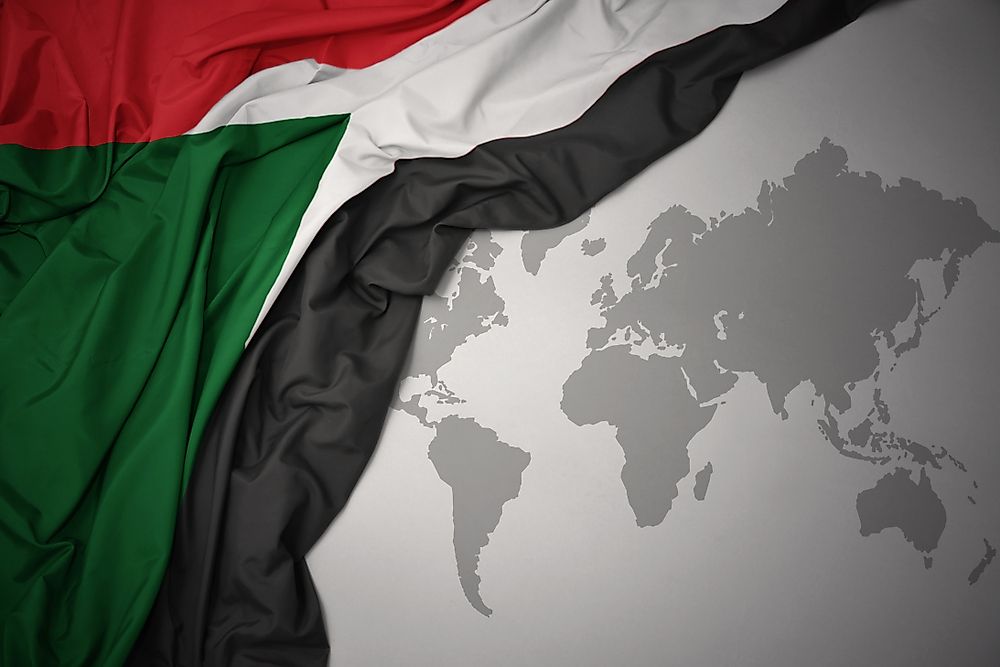What Are The Major Natural Resources Of Sudan?

Sudan is a northeastern African state that is surrounded by South Sudan, Libya, Eritrea, Chad, Central African Republic, Ethiopia, Egypt, and the Red Sea. It is the third-largest African nation by land area and the newest country in the world. Some of the primary natural resources which contribute to Sudan’s GDP (gross domestic product) include:
Petroleum
Extensive petroleum exploration in Sudan started in the mid-1970s, and this resulted in the discoveries of oil in the Upper Nile region. Sudan began exporting oil in October 2000, and currently petroleum export is one of their important industries which accounts for up to 80% of their total exports. The primary Sudanese oil importers include India, Indonesia, South Korea, China, and Japan.
Gold
Sudanese gold is found in three geological formations: quartz-vein, Parenthesis Gossan, and Alluvial gold formation. The alluvial gold formation is mined along the River Nile and its branches while the quartz-vein formation is in the Blue Nile region, Obaidiya, and North Kurdufan. The Parentheses Gossan formation is mined in Eriab area which is situated on the eastern parts of mount Nuba. Gold production increased by over 1,200% from 7 tons in 2008 to over 90 tons in 2017. Hassai gold mine is the only Sudanese mine which produces over 90,000oz/year. Hassai gold mine also produces Iron ore and base metals.
Nile River
The Nile River is the longest river on Earth and a main north-flowing river in the northeastern parts of Africa. It is an international river whose drainage basin includes 11 nations. The northern part of the Nile flows through the Sudanese desert to the Large Delta. It is one of the dominant features in Sudan which stretches for about 4,130miles from Uganda to Egypt. A considerable percentage of Sudan is within River Nile’s catchment basin. The White Nile (originating from the Central African lakes) and the Blue Nile (originating from Lake Tana, Ethiopia) merge in Khartoum to create the river Nile. The Nile is the primary source of water in Sudan. Other tributaries of river Nile which flow through Sudan include Atbarah, Sobat, and Bahr el Ghazal rivers.
Chromium Ore
The estimated crude Chromium ore deposit in Sudan is about one million tons. Chromium deposits are found in the Red Sea Mountain region in the northeastern parts of the country, Nuba Mountains, and Inqasna Mountains. Chromite is mined at the Ingessana Hills, which has a reserve of over a million tons. The Ingessana Hills Mines Corporation produces over 10,000 tons of chromite ore annually, and its production doubled in 2014 from 30,870 tons to 61,334 tons.
Iron Ore
The iron ore reserves of Sudan are in Baljarawih and West Darfur (River Nile State), Abu Tolo Mountain (South Kordofan), and in the Red Sea hills. The iron ore reserves found in Wadi Halfa region and Baljrawih area are estimated to be over 2 billion tons.
Other Natural Resources In Sudan
Sudan has abundant natural resources, and this has boosted the country’s mining industry. Sudan is one of the African states which produces Manganese. Some of its significant manganese reserves are situated in the Albeodh desert and the Red Sea Mountains. Uranium and numerous other rare elements are mined in Butana, Red Sea, West and South Kordofan, and Darfur pit copper. Kaoline is found in the southern parts of the Nile River State and some parts of Khartoum. Gypsum reserve was identified in Mount Sagomhas and the Beraat area while graphite is in the Blue Nile. The asbestos fibers reserves at Gouge Zone-Bees reserve have been estimated to be over 53,500 million tons, but some have been mined already. The Asbestos ore in Iqasna was estimated to be over 6,650 million tons.











